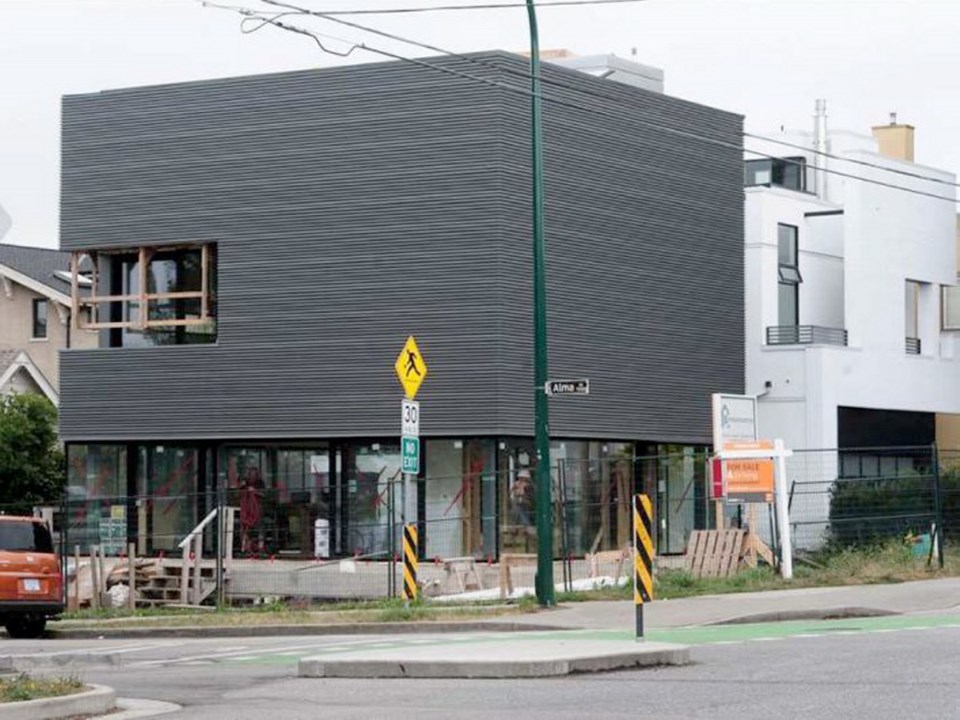VANCOUVER — On a coveted corner of Vancouver’s Golden Mile, one man’s modern masterpiece is another man’s modern monstrosity.
The house at 3691 Point Grey Rd. is still under construction, but it’s already the talk of the neighbourhood, drawing curious gazes and aghast criticism, including a tongue-in-cheek nomination on a local blog for “Vancouver’s Most Hideous Urban Design for 2016.”
From the exterior, the 2,280-square-foot two-storey house is a cube of galvanized steel atop a glassed-in ground floor area. Cut into the steel are modest-sized windows on the north, west and east facades, providing views of Hastings Mill Park and Jericho Beach — but not on the south side facing Point Grey Road, which has prompted comparisons by online commenters to a “concrete bunker,” a “box with a skirt,” and an “abomination.”
Architect Tony Robins said he wanted to build an iconic sculptural house on that high-profile corner and disputes the house’s “unfriendliness,” saying the ground floor has more glazing than any other house on the street.
“Not a fan,” said Sarah Baldwin, who was walking her dog in the neighbourhood on Wednesday. “It’s an eyesore.”
A neighbour was befuddled by the design. “Where are the windows?” she asked. “Is that black the end result or are they going to stick something on the front?”
Some people, however, say the house fits the context of nearby houses with their gates and privacy hedges on a street described as Vancouver’s most exclusive driveway.
Historian Michael Kluckner described the house as “unneighbourly” but par for the course — the ultimate expression of our society’s evolution from a front-porch culture to a courtyard culture.
A century ago, Vancouver houses looked outward, their windows as eyes on the street with front porches that allowed for interaction with neighbours, said Kluckner. But throughout the decades, “there was a turning inward that has accelerated.”
Modern homes now usually present “an almost blank face on the street,” with drawn windows and an expansion of the backyard as a private recreational space. “You realize how much the design of a house … has the ability to connect with people and how much of that has disappeared,” he said.
Former city councillor and urban planner Gordon Price, who posted an emailed discussion on the eye-catching house on his blog, said the house is polarizing. “It’s one of those things where no one has a middle opinion. You love it or you hate it.”



